Image top: Revegetation on the flats

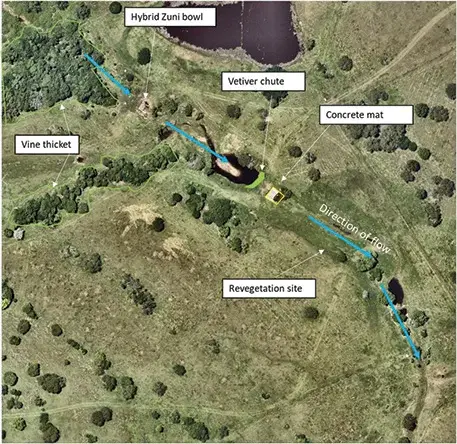
Literature on contour swales, leaky weirs and check dams is easy to come by, but the term “Zuni bowl” hasn’t entered the lexicon in the topic of erosion management. A Land for Wildlife member in Ipswich recently embarked on trialling novel strategies to rectify a series of active erosion gullies that formed on her property after consecutive wet years.
Marina’s property was identified as a prime candidate for a Healthy Land & Water initiative through the Healthy Catchments Program. This Program aims to deliver stream bank and gully stabilisation projects in areas identified as a source of sediment load impacting the Ramsar-listed Moreton Bay. Marina’s property is within the Lower Bremer River Catchment, which is a significant source of sediment for Moreton Bay.
The project included implementing small-scale gully repairs, combined with revegetating the flats with pre-clearing remnant vegetation of Brigalow and semi-evergreen vine thicket. Marina’s existing commitment to conservation made this project possible as the overall outcome could be leveraged by work that had already been done on the property.
Airborn Insight was engaged by Healthy Land & Water to provide recommendations to rectify a series of head cut erosion issues along a gully that connects revegetation patches and the remnant vine thicket. Specialising in aerial data collection to devise engineering and environmental solutions, Airborn Insight uses LiDAR (Light Detection and Ranging) imagery to produce accurate contour maps, backed up by high-definition drone imagery to identify the catchment area contributing to the project sites.
Based on these assessments, two control measures were recommended by the consultant:
- Head Cut 1: Installation of a hybrid Zuni bowl to stabilise the head cut and safely channel the flow to the gully floor.
- Head Cut 2: concrete mat chute to reinforce the gully head cut and direct the flow to the gully floor.
Originating from the Zuni people of New Mexico, a Zuni bowl is a method of rectifying small head cut erosion (typically <1m height) by creating two or more drops (step-falls), which reduce the single drop of the original head cut. This method was considered suitable for Marina’s property as the alternative options required creekbank battering five metres back through to the existing access track.
The Zuni bowl was created by firstly reshaping the head cut to create a uniform surface on which to install rocks and timber. The head wall was cut to follow the existing shape of the head cut with 10% lean so that the materials settled back against the earthen wall. A stepped timber chute was installed with a 0.4 m fall to dissipate the energy of water.
Concrete matting, geotextile fabric and non-dispersive clay was installed on the second head cut erosion downstream from the Zuni bowl to armour the gully floor. Grass seeds were sown directly onto the works, which will eventually grow through the matting and stabilise the slope.
It’s an important reminder that earthworks and engineering can play a part in land restoration projects. Small to medium scale earthworks and engineering solutions such as Zuni bowl and concrete matting may be good alternative solutions when other measures including bank battering, revegetation and coir log installation are not enough to address the scale of the problem.
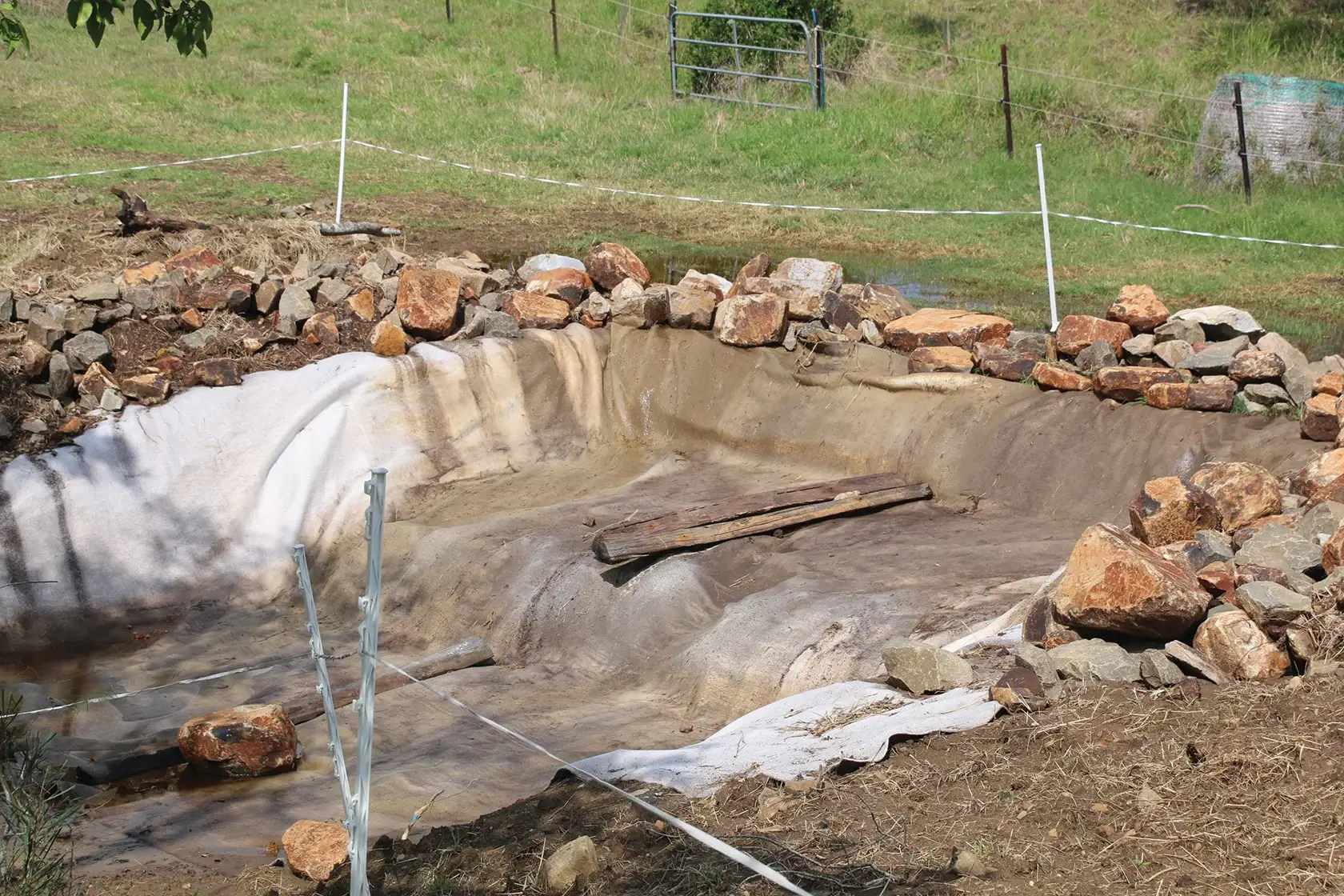
Head Cut 1: The headcut was reshaped and the suface was lined with geotextile fabric prior to the installation of rocks and timber.


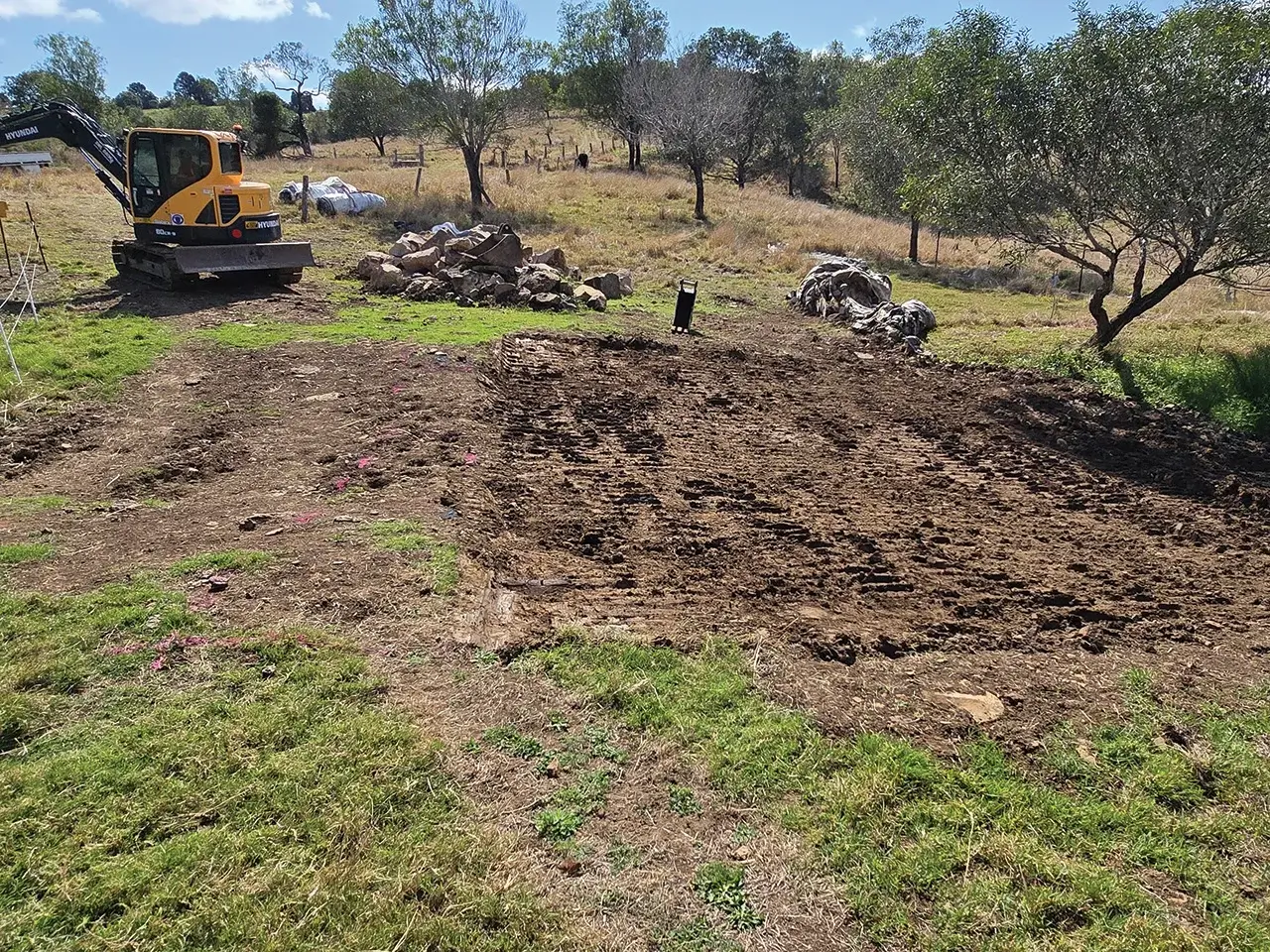


A trench was dug for concret matting.
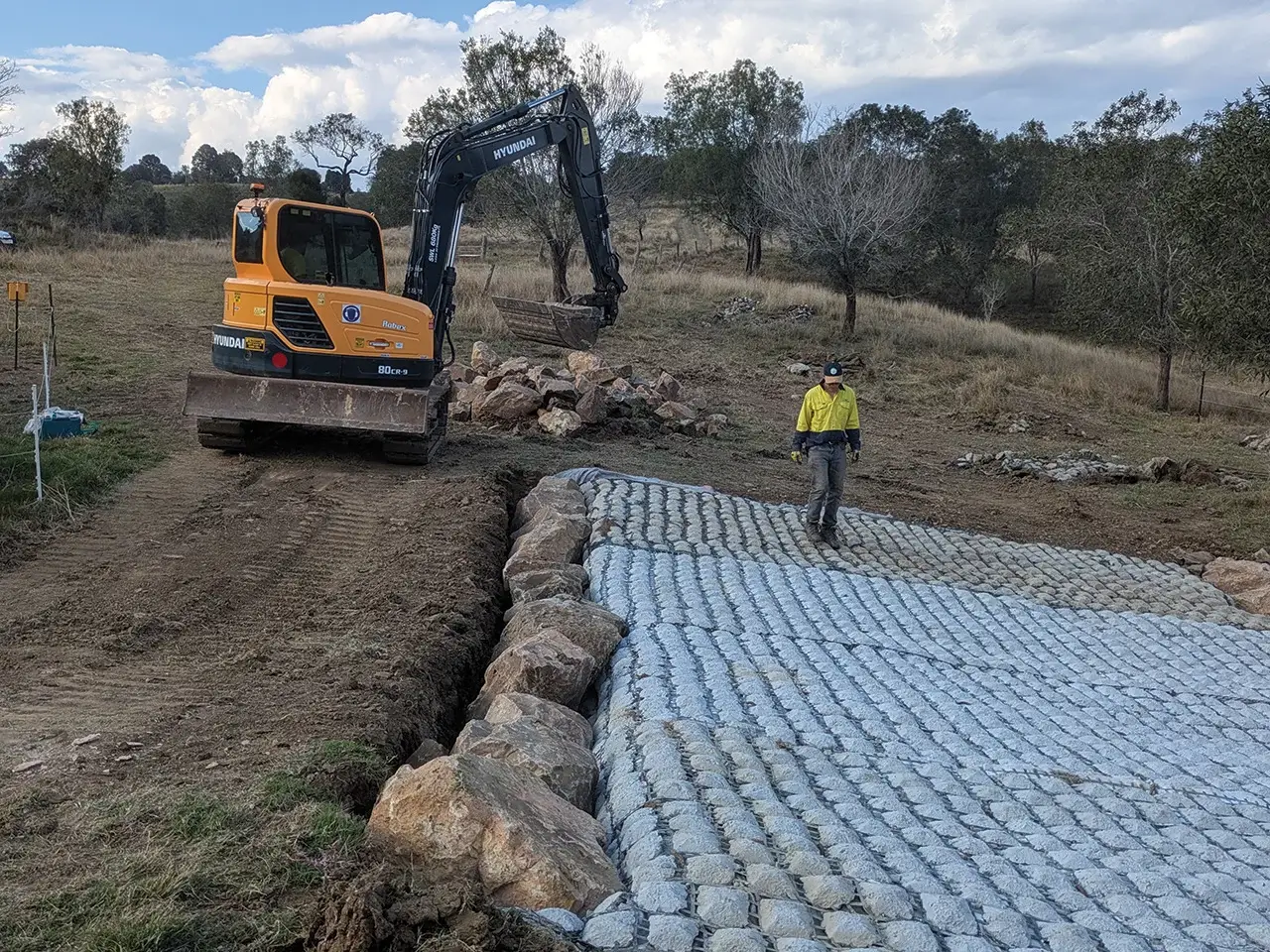
Rocks were installed in the trench.

Non-dispersive clay was used to compact in the fill.
Grass seeds were sown into the works and will eventually grow through the matting and stabilise the slope.
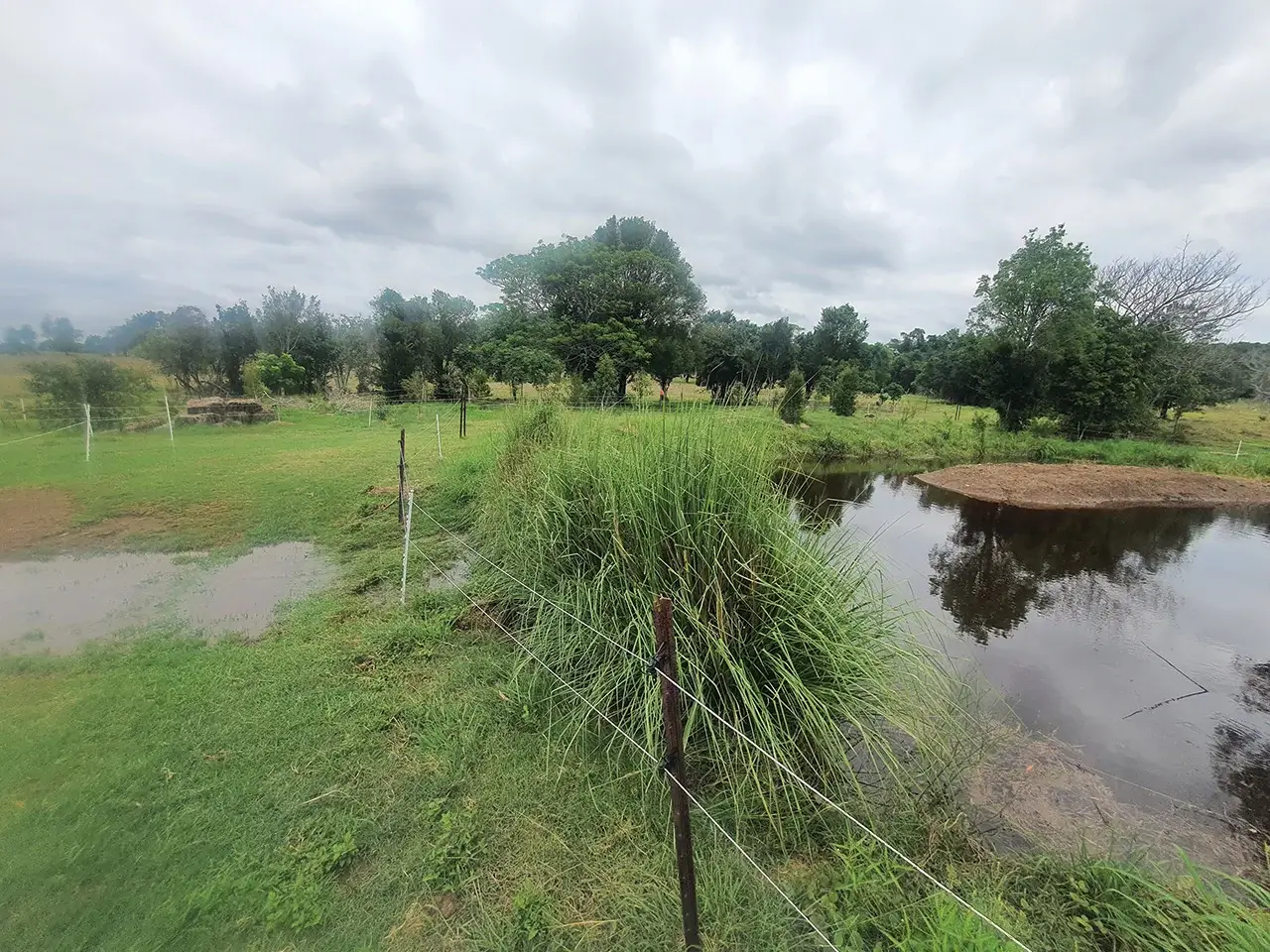
Rows of Vetiver Grass were planted to slow down overland flow and dissipate the erosive force of fast-flowing water.
Article by Ko Oishi
Land for Wildlife Officer
Ipswich City Council
